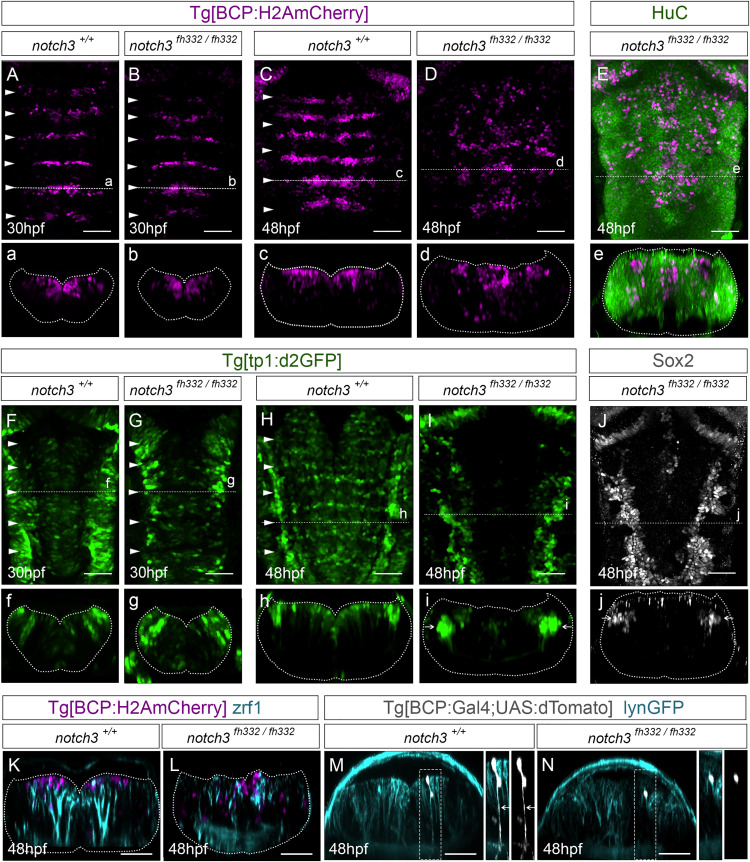Fig. 6 Figure 6. Notch3 is crucial for maintaining boundary cells as radial glia progenitors (A–J) Tg[BCP:H2AmCherry;notch3+/+] and Tg[BCP:H2AmCherry;notch3fh332/fh332] embryos were used for the analysis of the (A–D) position of boundary cells and their derivatives (36 hpf, notch3+/+ n = 6/6 embryos versus notch3fh332/fh332 n = 6/6 embryos; 48 hpf, notch3+/+ n = 8/8 embryos versus notch3fh332/fh332 n = 8/8 embryos), (E) differentiated neurons (n = 7/7 embryos), (F–I) Notch-activity (30 hpf, notch3+/+ n = 7/7 embryos versus notch3fh332/fh332 n = 7/7 embryos; 48 hpf, notch3+/+ n = 4/4 embryos versus notch3fh332/fh332 n = 4/4 embryos), and (J) neural progenitor cells (n = 7/7 embryos). Dorsal (A–J) and transverse (a–j) views of the indicated boundary (dashed line). (K–L) Transverse views from Tg[BCP:H2AmCherry;notch3+/+] and Tg[BCP:H2AmCherry;notch3fh332/fh332] embryos labeled with zrf1 (notch3+/+ n = 5/5 embryos; notch3fh332/fh332 n = 7/7 embryos). (M–N) Clonal analysis of radial glia morphology of boundary progenitors. Transverse views of Tg[BCP:Gal4;notch3+/+] and Tg[BCP:Gal4;notch3fh332/fh332] embryos showing plasma membranes in cyan and boundary cell nuclei in white. Note that upon notch3 mutation boundary cells lose the radial glia projection (see inserts). BCP, boundary cell population; hpf, hours post-fertilization. Scale bar, 50 μm.
Image
Figure Caption
Figure Data
Acknowledgments
This image is the copyrighted work of the attributed author or publisher, and
ZFIN has permission only to display this image to its users.
Additional permissions should be obtained from the applicable author or publisher of the image.
Full text @ Cell Rep.

